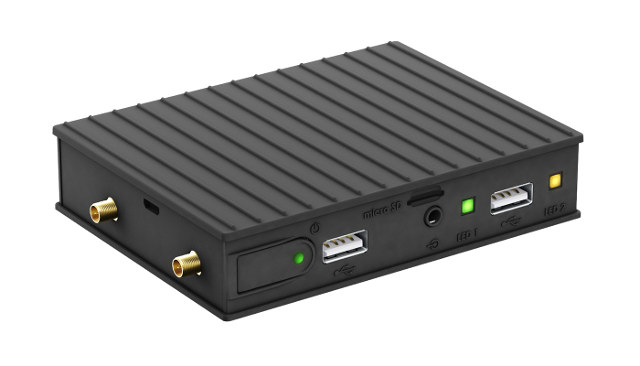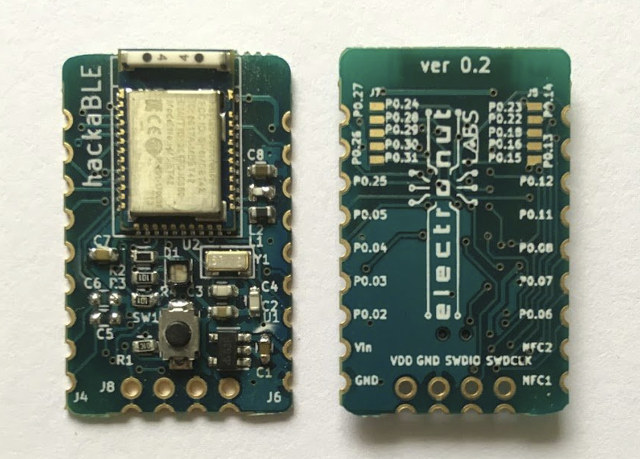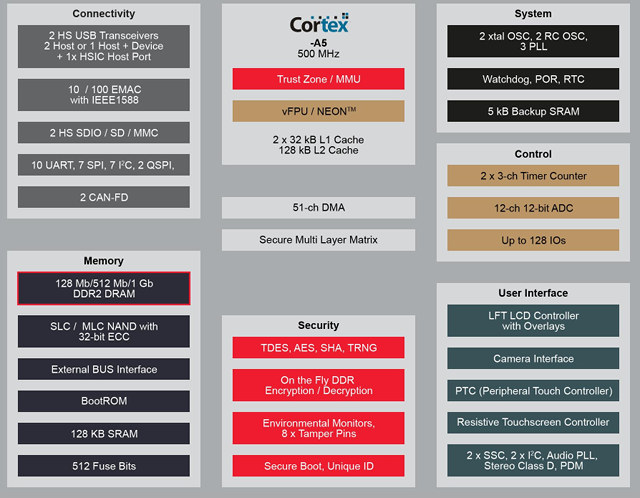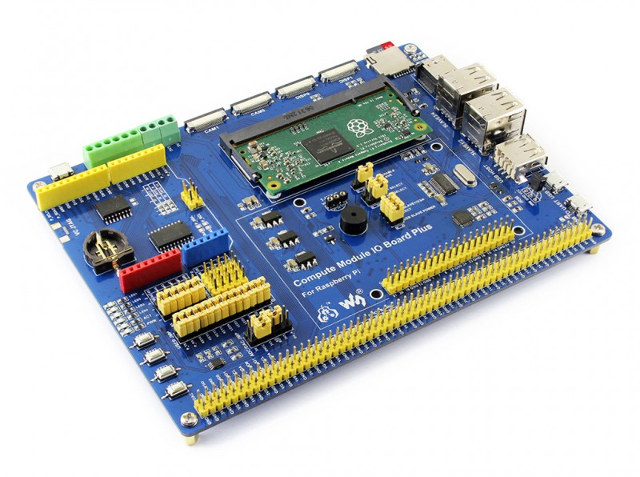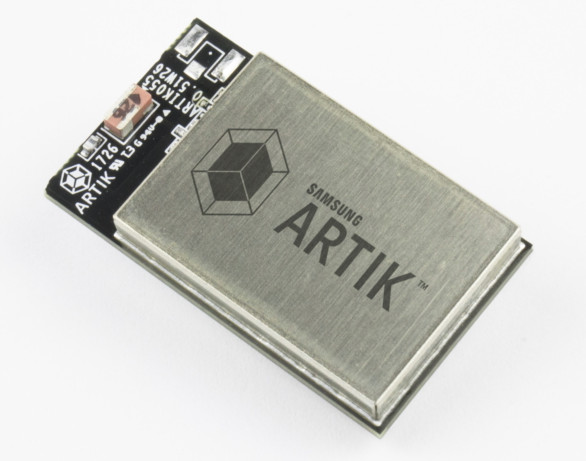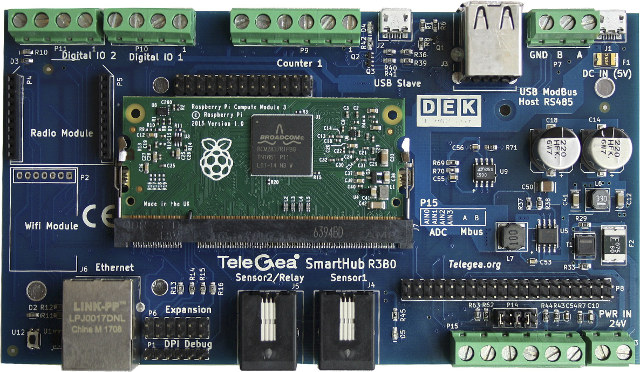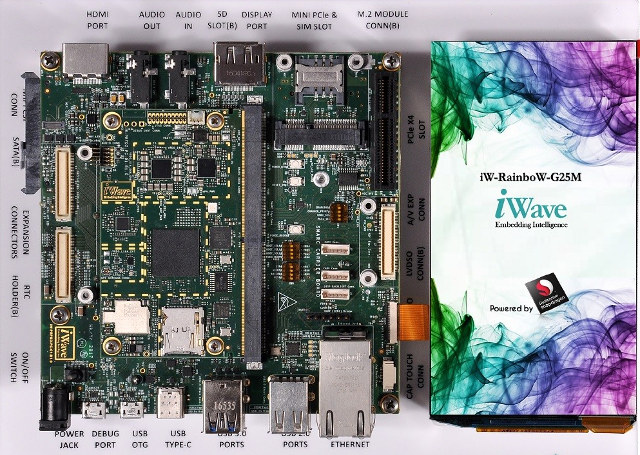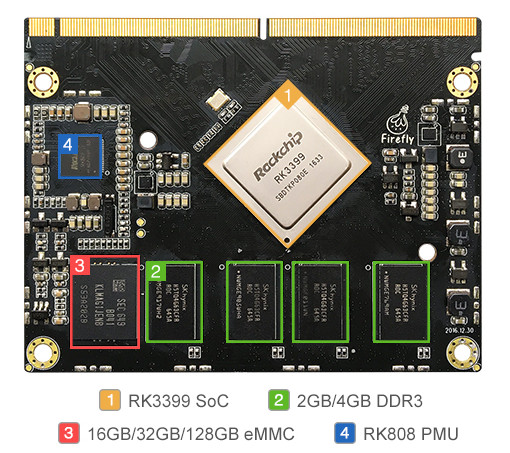We’ve seen several industrial products powered by Raspberry Pi 3 board or CM3 module recently, with the likes of Industrial Shields Panel PC, TECHBASE ModBerry, or Pi/104 PC/104 compliant carrier board among others. We can now add another industrial computer based on Raspberry Pi CM3 module with Compulab IOT-GATE-RPi IoT gateway, with dual Ethernet port, support for 3G/LTE modems, a rugged case, and working in a wide temperature range of -40°C to 80°C. Compulab IOT-GATE-RPi specifications: SoC – Broadcom BCM2837 quad-core Cortex-A53 @ 1.2GHz with VideoCore IV GPU System Memory – 1GB LPDDR2 Storage – 4 to 64GB of soldered eMMC flash, micro SD socket Connectivity 2x 100Mbps Ethernet WiFi 802.11b/g/n, Bluetooth 4.1 BLE 3G / LTE cellular modem via mini-PCie module) Video Output – HDMI 1.3, up to 1920×1080 Audio – 3.5mm stereo line out jack, HDMI audio USB – 4x USB2.0 host port Serial 1x RS232 port, ultra-mini […]
HackaBLE Board is a Tiny, Breadboard-Friendly Bluetooth LE Development Board
Earlier this year, I wrote about Electronut Labs’ Bluey development board powered by Nordic Semi nRF52832 development board with BLE, NFC, and a few sensors, and partially open source hardware with the KiCAD schematics and PCB layout available on Github. The company is now back with another open source hardware nRF52832 BLE board, namely hackaBLE, that’s much smaller (28x18mm), and with 2.54mm pitch castellated pin headers making suitable for use for breadboard, or as a module on a custom designed board. hackaBLE board specifications: SoC – Nordic Semi nRF52832 ANT + BLE ARM Cortex-M4 @ 64 MHz processor with 512kB flash, 64kB RAM Connectivity – Bluetooth 4.2/5 LE and other proprietary 2.4 GHz wireless standards via chip antenna Expansion 2x 9-pin castellated headers with GPIO, 5V, 3.3V, and GND 2x 5-pin solder pads for more I/Os Debugging – 4-pin SWD header Misc – RGB LED, and user button Power Supply […]
SAMA5D2 Based SiPs Combine ARM Cortex-A5 Processor With Up to 128MB DDR2
Atmel SAMA5D2 ARM Cortex-A5 processor was released about two years ago with extended temperature range and lower power consumption compared to previous SAMAD5 processors, with the new SoC still targeting industrial Internet of Things (IIoT), wearables and point of sale applications. In recent years, we’ve seen companies packing main components into systems-in-package (SiP) with products such as Octavo Systems OSD3358 and Espressif Systems ESP32-PICO-D4 with integrate an existing processor with memory, storage, and/or PMIC. Microchip (previously Atmel) has now done the same for their SAMA5D2 processors with SiPs combining the Cortex A5 SoC with DDR2 memory. Four SAMA5D2 SiPs have been launched: ATSAMA5D225C-D1M based on ATSAMA5D22C MPU with extra SD/SDIO, QSPI, FLEXCOMs (2x), I2S, and timers (2x) and: 128 Mb (16 MB) DDR2 DRAM 90 Peripheral I/Os 196 BGA Package Designed for RTOS/bare metal development ATSAMA5D27C-D5M based on ATSAMA5D27C MPU with: 512 Mb (64 MB) DDR2 DRAM 128 Peripheral I/Os […]
$50 Waveshare Compute Module IO Board Plus is Designed for Raspberry Pi CM3/CM3L Compute Modules
Raspberry Pi Compute Module CM3L and CM3 are fairy inexpensive at $25 and $30 respectively, but if you want to get the complete development kit with Compute Module IO Board, CM3 and CM3L modules, and accessories you’ll need to spend around $150 plus shipping. A cheaper option might be Waveshare “Compute Module IO Board Plus for Raspberry Pi CM3, CM3L” with many of the same features as the original Compute Module IO board, plus some extras like terminal blocks for ADC/DAC or RTC battery, which I first found on DX for $49.95 including shipping. Waveshare Compute Module IO Board Plus specifications: Compute Module socket for Raspberry Pi CM3/CM3L I/O headers 40-pin Raspberry Pi GPIO header (3) GPIO header for all pins exposed by the modules (2) Arduino headers for shields (10) 10-bit ADC/16-bit DAC screw terminals (11) 3x 5-pin sensor interface (13) 1-WIRE interface, for connecting single-bus devices like DS18B20 […]
Samsung IoT Security News – ARTIK Secure IoT Modules, SmartThings Cloud, and Secure Element
Samsung has made several announcements with IoT, especially IoT security. First, Samsung ARTIK 053, ARTIK 530 and ARTIK 710 modules are getting an “s” version, which stands for “robust security”, as well as a new ARTIK 055s module, and all ARTIK modules can now work with SmartThings Cloud uniting the company’s existing services – ARTIK Cloud and Samsung Connect Cloud – into a single IoT platform. Separately, the company announced their Secure Element solution which combines eFlash memory and new security software. Samsung ARTIK “s” modules & ARTIK 055s The company explains in their blog that ARTIK 053s, 530s, 710s, and the all new 055s will feature “advanced protection, integrated cloud services, and hosted security services with “enhanced ARTIK end-to-end security by providing greater protection for IoT data as well as prevention against hacking”. The press release is a little more specific: ARTIK secure IoT modules provide a strong root […]
Telegea Smart Hub DIN Rail IoT Gateway is Powered by Raspberry Pi CM3 Module
DEK Italia has recently introduced Telegea Smart Hub, an IoT gateway based on Raspberry Pi Computer Module 3 (CM3) with Ethernet, WiFi, RS232/485 ports, and various other I/O ports, that can leverage Raspberry Pi software ecosystem. The company explains the device is mainly targeted at DIY home automation applications as a smart home controller which runs open source smart home software like OpenHAB and Home Assistant, but it can also be used for many other IoT applications. Telegea Smart Hub R3B0 specifications: SoC – Broadcom BCM2837 quad core Cortex A53 processor with VideoCore IV GPU System Memory – 1GB LPDDR2 RAM Storage – 4GB eMMC flash, 256 byte EEPROM Connectivity – 10/100M Ethernet port, optional Wifi 802.11 b/g/n at 2.4 GHz Serial – RS485 serial port, RS232 serial debug port USB – 2x USB 2.0 host ports Expansion 6xdigital inputs via screw terminals (for dry contacts or S0 interface) 4x […]
iWave Systems iW-RainboW-G25D is a SMARC 2.0 Compliant Snapdragon 820 Development Kit
iWave Systems previously launched iW-RainboW-G25S single board board powered by Qualcomm Snapdragon 820 processor. The company is now back with a new Snapdragon 820 development kit called iW-RainboW-G25D that complies with SMARC 2.0 SoM specifications. The kit include a SoM with 3GB RAM, 32GB storage, WiFi and Bluetooth connected to a SMARC compliant baseboard, and optionally features a 5.5″ AMOLED touch screen display. iWave Systems iW-RainboW-G25D development kit specifications: APQ8096 SMARC iW-RainboW-G25M SoM: SoC – Qualcomm Snapdragon 820 (APQ8096) quad core Kryo CPU with Adreno 530 GPU @ 624MHz, Hexagon 680 DSP @ 825 MHz (no modem) System Memory – 3GB LPDDR4 RAM Storage – 32GB eMMC Flash, micro SD slot Connectivity PCIe to Gigabit Ethernet + PHY 802.11a/b/g/n/ac Wi-Fi + BT4.1 Low Energy (BLE) GPS/GNSS receiver 314-pin MXM 3.0 edge connector as per SMARC 2.0 specifications SMARC Carrier Board Storage – M.2 slot (back), SATA, SD card slot (back), […]
Firefly Introduces RK3399 CoreBoard with up to 4GB RAM, 128GB eMMC Flash
Firefly-RK3399 is a development board powered by Rockchip RK3399, and the company behind the board has now launched a system-on-module called RK3399 Coreboard with 2 to 4GB RAM, 8 to 128GB flash, a PMIC, and a 314-pin MXM 3.0 edge connector exposing various I/Os. RK3399 CoreBoard specifications: SoC – Rockchip RK3399 hexa-core big.LITTLE processor with dual core ARM Cortex A72 up to 2.0 GHz and quad core Cortex A53 processor, ARM Mali-T860 MP4 GPU with OpenGL 1.1 to 3.1 support, OpenVG1.1, OpenCL and DX 11 support System Memory – 2GB or 4GB DDR3 Storage – 8, 16, 32 or 128 GB eMMC flash Carrier Board Interface – 314-pin MXM 3.0 edge connector with Ethernet, PCIe, HDMI 2.0, DP 1.2, MIPI DSI, eDP 1.3, S/PDIF, I2S, GPIO, USB, etc… signals Power Supply – 5V/3A input; RK808 PMIC Dimensions – 82 x 63 mm Weight – 24 grams The company provides support […]


